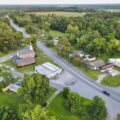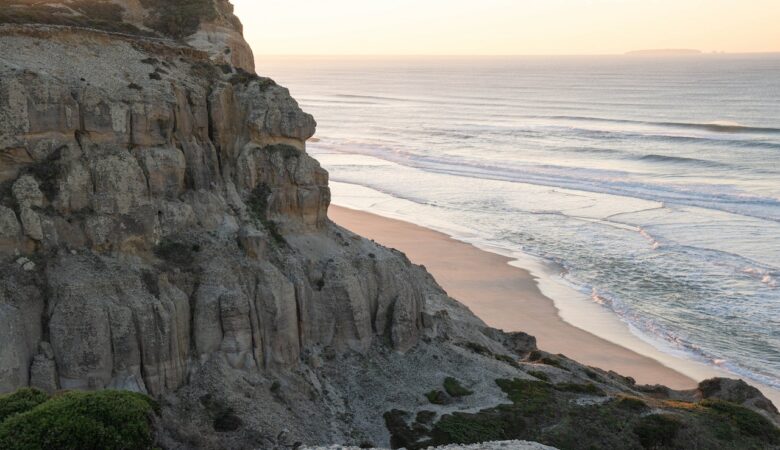When talking about North American nature reserves, Yellowstone, the Grand Canyon, and Yosemite usually come to mind first. However, the continent hides dozens of secluded natural corners with no tourist crowds but with pristine flora, rare animals, and a true sense of solitude. For adventure seekers from Portugal, this is a chance to see the continent from a different perspective — without a guide or photo sessions, but with a compass and an explorer’s spirit.
Horne Lake Caves, British Columbia, Canada
Among the dense forests of British Columbia lies one of the most underrated natural wonders — the Horne Lake Caves reserve. It’s a network of karst caves formed millions of years ago by the action of water and time. Some caves are open to tourists, but most routes require participation in speleological tours with helmets, flashlights, and a guide.
In this reserve, you can see stalactites and stalagmites in their natural, untouched environment. Many caves are still being explored by scientists, and new routes are discovered every year. If you’re not claustrophobic, this underground world will leave you with unforgettable impressions.
Grasslands National Park, Saskatchewan, Canada
This park is the opposite of mountainous or forested areas. The Prairie National Park is an endless expanse of flatland where bison graze and rare falcon species soar. Despite its vast territory, it remains one of the least-visited parks in Canada.
What’s most striking here are the starry nights. The park is part of the international “dark sky” network, with absolutely no light pollution. For Portuguese tourists used to coastal and urban landscapes, a walk through this “green desert” is a true sensory reset.
Chiricahua National Monument, Arizona, USA
In southern Arizona, near the Mexican border, lies Chiricahua — a natural monument shaped by wind and time. It’s often called the “land of standing-up rocks.” It features a mass of stone formations resembling towers, spires, and giant rock mushrooms. These were formed by an ancient volcanic eruption around 27 million years ago.
Here, you may encounter Mexican doves, rare lizards, and, if you’re lucky, jaguars crossing in from the south. The uniqueness of this place lies in its location at the crossroads of four different ecosystems — desert, grasslands, oak forests, and pine mountains.
Congaree National Park, South Carolina, USA
Congaree Park is one of the largest and best-preserved floodplain forest areas in the southeastern United States. Just 30 minutes from the city of Columbia, it remains little-known even among Americans.
Its main treasure is the centuries-old cypress trees whose roots dive into swampy soil, creating a tropical forest atmosphere. Many trees here grow over 40 meters tall. In Congaree, visitors can walk along wooden boardwalks or paddle through flooded areas by kayak. The humid air, bird songs, and lack of hustle make this place a true retreat.
Zapata Peninsula, Cuba
Though Cuba is often associated with Varadero beaches and all-inclusive resorts, the Zapata Peninsula in the country’s south is a different world. It is home to one of the largest wetlands in the Caribbean — Ciénaga de Zapata, a UNESCO Biosphere Reserve.
Rare bird species live here, including the Cuban crocodile and over 170 species of migratory birds. Eco-tourism lovers should pay attention to this place — the infrastructure is minimal, but the experiences are as vivid as they come. This is particularly interesting for Portuguese travelers looking to combine Spanish-speaking culture with undiscovered routes.
Gila Wilderness, New Mexico, USA
Gila Wilderness was the first area in the U.S. to receive official “wilderness” status. It features rugged canyons, pine forests, hot springs, and ancient Native American dwellings carved into cliffs.
Unlike classic parks, there are no signposted paths or cafes here — just you, a map, and wild nature. The area is especially popular among those seeking self-sufficient, multi-day treks. This is where you can truly experience solitude and freedom. Although Gila doesn’t appear in flashy brochures, it offers the kind of America found in the novels of John Steinbeck.
Why Pay Attention to Lesser-Known Reserves?
A New Look at North America
Traditional routes are comfortable but predictable. Exploring lesser-known parks reveals a different face of the continent — less commercial, more authentic. These places are ideal for those tired of tourist crowds and eager to rediscover North America.
Ecotourism as a Form of Respect
Visiting such reserves is not just an adventure, but a contribution to nature conservation. Tourism in these regions is strictly regulated, and local administrations work hand-in-hand with ecologists. It’s a chance to be part of something greater — caring for the planet.
More Freedom, Less Noise
In these parks, you won’t hear tour guide chatter or wait in line for photos. Instead, you’ll walk paths taken by only a few. And while it might require a bit more effort, that’s what makes the journey truly rewarding.
Conclusion
North America is not only about famous landscapes and national parks with millions of visitors. Beyond the tourist routes lie true natural gems. And if you’re ready to step off the beaten path — whether it’s Canadian caves, American swamps, or Cuban wetlands — you’ll get more than just a trip. You’ll walk away with a memory for life.








Leave a Reply